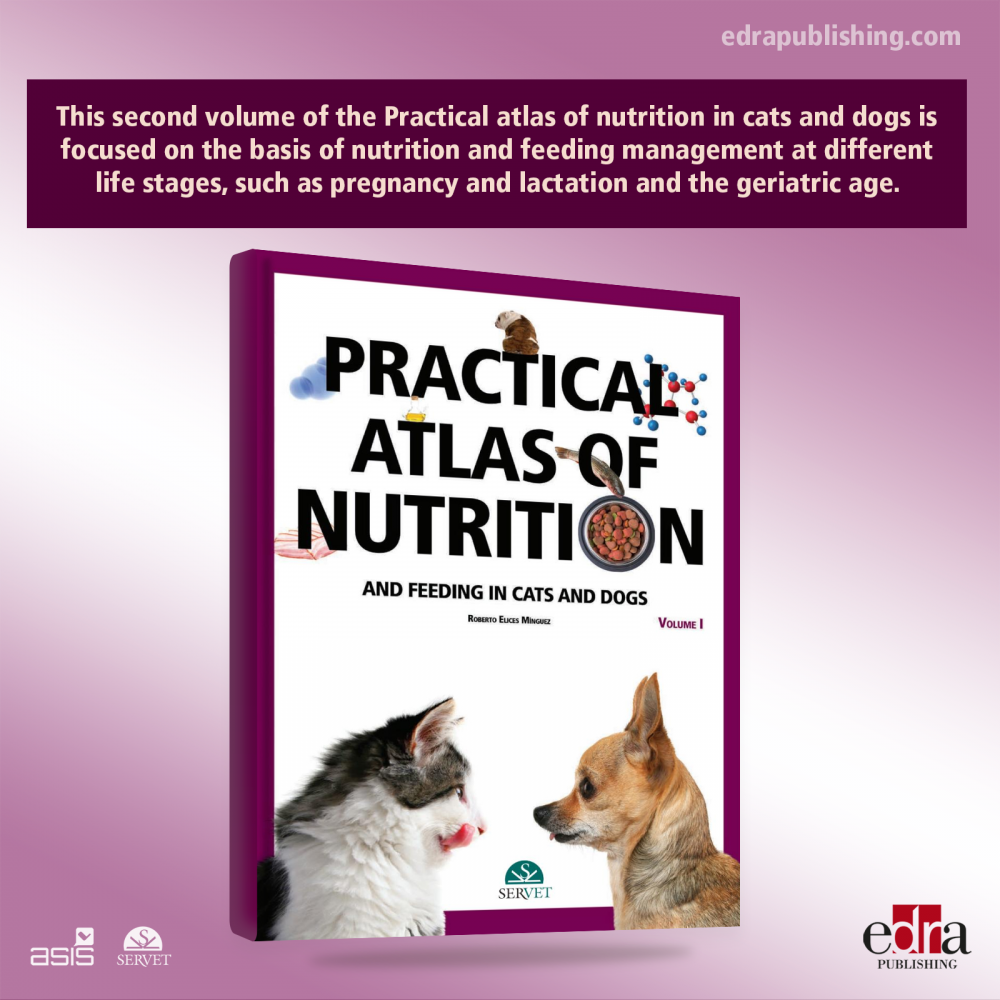





This second volume is focused on the basics of cat and dog nutrition and food management at different life stages, such as pregnancy and lactation and the geriatric stage. It also addresses the specific needs of puppies and kittens as well as sporting dogs. This book, like Volume I, is made of a series of double-page spreads with comprehensive information and plenty of visuals that, by turning concepts into images, will enable its readers to further their knowledge on pet nutrition in a pleasant manner. Who said nutrition was boring?
This second volume is focused on the basics of cat and dog nutrition and food management at different life stages, such as pregnancy and lactation and the geriatric stage. It also addresses the specific needs of puppies and kittens as well as sporting dogs. This book, like Volume I, is made of a series of double-page spreads with comprehensive information and plenty of visuals that, by turning concepts into images, will enable its readers to further their knowledge on pet nutrition in a pleasant manner. Who said nutrition was boring?
KEY FEATURES:
➜ Double-page spreads plenty of visuals.
➜ Practical book with the most updated information.
➜ Provides vets with a valuable resource for their
Authors:
ROBERTO ELICES MÍNGUEZ
PhD in Veterinary Medicine from the Universidad Complutense de Madrid (UCM), Spain. Professor of Production and Companion Animal Nutrition. Veterinarian in the Veterinary Teaching Hospital of the School of Veterinary Medicine of Madrid (UCM).
Table of Contents:
1. Practical management of feeding
How should we feed our pets?
Learning to eat
Strategies to stimulate ingestion (I)
Strategies to stimulate ingestion (II)
2. Feeding for reproduction
Nutritional management of breeding animals
Feeding pregnant females
Fats and proteins during pregnancy
Minerals and vitamins in pregnancy
Feeding management for pregnant pets and possible pathologies
3. Feeding lactating females
Females in lactation: colostrum and milk
Energy requirements during lactation (I)
Energy requirements during lactation (II)
Nutrients and management during lactation
4. Feeding puppies and kittens
Puppy and kitten growth
Weight gain in puppies and kittens
Lactation and milk replacements
Enzymatic development of the digestive system
Requirements during growth (I)
Requirements during growth (II)
Food management in puppies and kittens
5. Feeding geriatric animals
The aging process
How does food restriction affect aging?
Gastrointestinal changes due to aging
Other systemic changes of aging
Requirements in healthy geriatric animals (I)
Requirements in healthy geriatric animals (II)
Cognitive dysfunction syndrome
Nutrients to fight CDS (I)
Nutrients to fight CDS (II)
6. Feeding sporting and working dogs
Sporting dogs
Effects of exercise on digestion and the metabolism
Changes associated with training
Obtaining ATP for exercise
How much energy does a dog spend when running?
Factors increasing ER when running
Temperature and energy requirements in exercise
Nutrients for exercise: water and proteins
Nutrients for exercise: fats and FAs
Nutrients for exercise: carbohydrates and fiber
Vitamins and minerals for exercise
Management of feeding in sporting dogs
Data sheet
Specific References